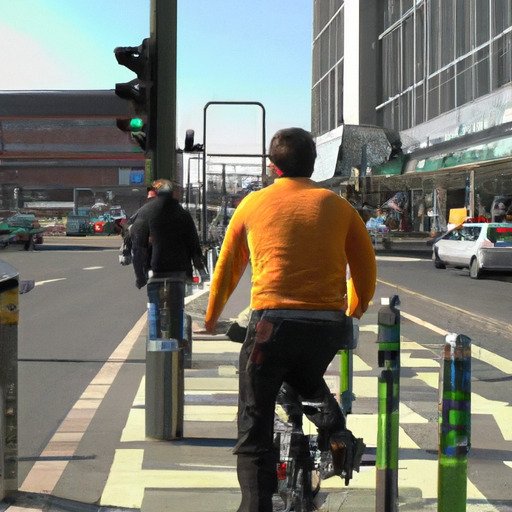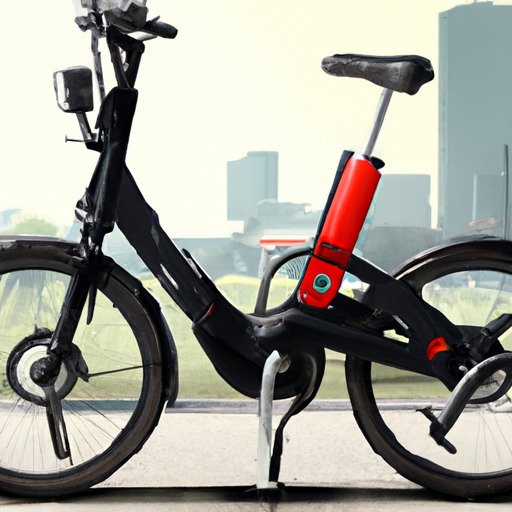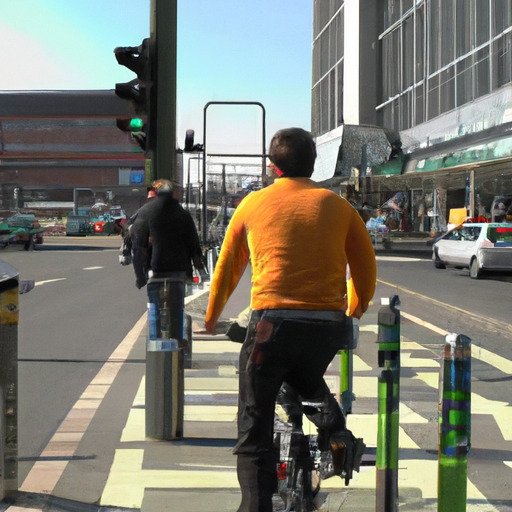
Have you ever wondered if you can bring your e-bike on public transportation? Well, you’re not alone! Many people who enjoy cycling with an electric boost are curious about whether they can easily take their e-bikes on buses, trains, or subways. The good news is that in many cities, it is indeed possible to bring your e-bike on public transportation, making it even more convenient to go on longer rides without worrying about running out of battery or getting too tired. However, there are a few things you need to know before you hop on with your e-bike, so let’s dive into the details in this article.
If you’re interested in bringing your e-bike on public transportation, keep reading, because in this article, we’ll cover everything you need to know. We’ll discuss the different policies and regulations in various cities and countries, the specific requirements you might have to meet, and any additional fees that could be involved. Whether you’re commuting to work, planning a cycling adventure in a new city, or simply want to explore more areas with your e-bike, we’ve got you covered. So, let’s explore the possibilities of bringing your e-bike on public transportation in more detail.

Understanding E-bikes
What is an e-bike?
An e-bike, short for electric bike, is a bicycle that is equipped with an electric motor to assist with propulsion. Unlike traditional bicycles that rely solely on human power, e-bikes offer an additional boost to the rider, making it easier to pedal and travel longer distances with less effort. E-bikes are becoming increasingly popular as a mode of transportation due to their convenience and eco-friendly nature.
How does an e-bike work?
E-bikes work by combining the power of a traditional bicycle with a rechargeable battery and an electric motor. The rider can choose to pedal manually or engage the electric motor for assistance. The motor is usually controlled by a handlebar-mounted throttle or a pedal-assist system, which detects the rider’s pedaling and automatically provides a corresponding level of assistance. The motor can help the rider reach higher speeds and tackle hills more easily, making commuting by e-bike a feasible option for many individuals.
Types of e-bikes
There are several types of e-bikes available in the market, each designed to cater to different needs and preferences:
-
City e-bikes: These are designed for urban commuting and usually feature a step-through frame for easy mounting and dismounting, as well as fenders and lights for increased safety.
-
Mountain e-bikes: Built for off-road adventures, mountain e-bikes have rugged frames, wide tires, and powerful motors to tackle rough terrains and steep inclines.
-
Folding e-bikes: These compact e-bikes are designed for easy storage and transportation. They are lightweight, foldable, and ideal for individuals who need to combine public transportation with cycling.
-
Cargo e-bikes: Cargo e-bikes are designed with heavy-duty frames and large cargo racks, making them perfect for hauling groceries, packages, or even children.
-
Fat-tire e-bikes: Fat-tire e-bikes are equipped with oversized tires for improved stability and traction. They are ideal for riding on sandy or snowy terrain.
E-bike Regulations
Local transportation rules regarding e-bikes
Different regions and municipalities have varying regulations concerning e-bikes on public transportation. It is important to familiarize yourself with the specific rules of your area before attempting to bring your e-bike on a bus, train, or subway.
Restrictions on e-bike usage
While e-bikes are generally allowed on public transportation, there may be certain restrictions in place. These restrictions can include limitations on the size and weight of the e-bike, as well as restrictions on the type of battery or power the e-bike utilizes. Ensure that your e-bike complies with these restrictions to avoid any inconvenience or potential fines.
Licensing and registration requirements
In some regions, e-bike riders may be required to have a license or register their e-bike with the local transportation authorities. This is to ensure that e-bike riders are aware of the rules and regulations governing their usage. Check with your local transportation authority to determine if any licensing or registration requirements apply to you.
Public Transportation Policies
E-bike policies on buses
Many bus systems allow e-bikes on board, but it is advisable to check with the transportation company beforehand. Some companies may have specific guidelines regarding the number of e-bikes allowed per bus, as well as requirements on securing the e-bike during the journey.
E-bike policies on trains
Similarly, most train systems permit the carriage of e-bikes, but it is crucial to verify with the train operator beforehand. Some trains may require the e-bike to be folded or secured in a specific area. It is also worth noting that peak hours may have restrictions on bringing e-bikes aboard trains.
E-bike policies on subways
Subways generally have more limited space for bicycles, including e-bikes. However, some subway systems allow e-bikes outside of peak hours or during less busy times. Checking with the subway operator or researching their policies ahead of time will help ensure a hassle-free journey.
Transportation Company Guidelines
Specific guidelines for different transportation companies
Different transportation companies may have their own specific guidelines when it comes to bringing e-bikes on board. Familiarize yourself with the guidelines of the company you plan to travel with to avoid any unexpected issues. Guidelines may include the maximum size and weight of e-bikes allowed, as well as any restrictions on battery or power specifications.
Size and weight restrictions
Transportation companies often have size and weight restrictions for bicycles, including e-bikes. These restrictions ensure that bicycles can be accommodated safely on their vehicles without causing discomfort or inconvenience to other passengers. Be sure to check the maximum allowable dimensions and weight for e-bikes on public transportation.
Battery and power restrictions
Due to safety concerns, some transportation companies impose restrictions on the type of battery or power that e-bikes can utilize. This is to prevent potential accidents or fires. Ensure that your e-bike complies with these restrictions to avoid any issues when traveling on public transportation.

Folding E-bikes
Advantages of folding e-bikes
Folding e-bikes offer several advantages when it comes to using public transportation:
-
Portability: Folding e-bikes are compact and lightweight, making them easy to carry and store on buses, trains, or subways.
-
Flexibility: Folding e-bikes can be conveniently folded and unfolded, allowing for seamless transitions between cycling and public transportation.
-
Space-saving: Folding e-bikes take up minimal space, allowing for more efficient use of limited storage areas on public transportation vehicles.
Policies for folding e-bikes on public transportation
Many transportation companies have specific policies for folding e-bikes, as they are generally more accommodating of these compact bicycles. Most companies allow folding e-bikes to be brought on board without any additional restrictions. However, it is still advisable to check with the specific company you intend to travel with.
Tips for transporting folding e-bikes
When transporting a folding e-bike on public transportation:
-
Ensure that your folding e-bike is securely folded and locked in its folded position to minimize the risk of it unfolding during transit.
-
If possible, place your folding e-bike in a designated area for strollers or foldable bicycles to prevent it from obstructing walkways or other passengers.
-
Be considerate of other passengers and their belongings. Avoid placing your folding e-bike in a space that may inconvenience or damage their belongings.
Securing and Storing E-bikes
Securing your e-bike on public transportation
When bringing your e-bike on public transportation, it is crucial to ensure its security and prevent any damage. Follow these tips to secure your e-bike effectively:
-
Use a sturdy lock to secure your e-bike to a designated bicycle rack or other secure structures if available.
-
If no racks are available, try to position your e-bike in close proximity to you, within your line of sight.
-
Remove any valuable accessories or bags from your e-bike to prevent theft or damage.
Locking and storage options
If you frequently commute with your e-bike on public transportation, investing in a high-quality lock is essential. Look for a robust lock that is resistant to cutting or picking, as this will deter potential thieves. Additionally, consider using a secondary lock to secure the wheels of your e-bike for extra protection.
If your e-bike has removable battery packs or accessories, it is advisable to take them with you when leaving your e-bike unattended on public transportation. This will reduce the risk of theft or damage to these valuable items.
Tips for preventing theft
To minimize the risk of theft and ensure the safety of your e-bike:
-
Be aware of your surroundings and choose well-lit areas to park and lock your e-bike.
-
Consider registering your e-bike with local authorities or using a GPS tracking device to increase the chances of recovery in the event of theft.
-
Take clear photographs of your e-bike, including any unique features or identifying marks. This will aid in identifying and recovering your e-bike in case of theft.
Peak Hours and Congestion
E-bike usage during peak hours
During peak hours, public transportation can become congested, potentially complicating the process of bringing an e-bike on board. It is crucial to plan your journey accordingly and be mindful of the additional space that your e-bike may occupy.
If possible, consider traveling during off-peak hours to avoid the crowds and ensure a smoother commuting experience with your e-bike.
Navigating crowded public transportation
When using public transportation with an e-bike during busy periods, follow these tips to navigate the crowds:
-
Be patient and courteous to your fellow passengers. Respect personal space and avoid blocking pathways or entryways with your e-bike.
-
If necessary, wait for the next bus or train that has more room to accommodate your e-bike.
-
Consider carrying your e-bike vertically instead of horizontally when boarding a crowded vehicle, as this may take up less space.
Considerations for rush hour travel
Rush hour travel can be particularly challenging when bringing an e-bike on public transportation. To ensure a smoother journey, keep the following considerations in mind:
-
Research the transportation company’s policies on e-bikes during peak hours. Some companies may have specific restrictions or instructions for bringing e-bikes aboard during busy periods.
-
Be prepared for potential delays or limited space due to overcrowding. Allow yourself extra time to account for these circumstances.
-
Consider alternative transportation options, such as bike-sharing services or alternative routes, to avoid rush hour congestion altogether.
Public Perception and Etiquette
Respecting fellow passengers
When bringing an e-bike on public transportation, it is essential to respect your fellow passengers and maintain good etiquette:
-
Avoid blocking or obstructing aisles, entryways, or seats with your e-bike. Keep it as compact and unobtrusive as possible.
-
Be aware of your e-bike’s weight and any potential impacts it may have on the vehicle’s suspension or other passengers’ comfort.
-
If requested by transportation staff or fellow passengers, provide assistance or adjust the positioning of your e-bike to ensure everyone’s safety and comfort.
Dealing with negative attitudes towards e-bikes
Despite their increasing popularity, some individuals may still have negative attitudes towards e-bikes on public transportation. If confronted with negative comments or attitudes, remain calm and courteous.
Gently explain the benefits of e-bikes, such as their eco-friendly nature and ability to reduce traffic congestion. Emphasize your respect for the rules and regulations regarding e-bike usage and offer to address any concerns the person may have.
Proper behavior and etiquette
To maintain a positive public perception of e-bikes and their riders, follow these general guidelines:
-
Observe and adhere to the rules and regulations governing e-bike usage on public transportation.
-
Yield to pedestrians and follow traffic laws when riding your e-bike to and from public transportation stations.
-
Keep noise levels to a minimum, including the sound of your e-bike’s motor or any additional accessories.
Alternative Transportation Options
Carrying e-bikes on bike racks
If bringing your e-bike on public transportation is not feasible or allowed, consider using bike racks. Many buses and trains are equipped with bike racks on the front or rear, offering a convenient and secure way to transport your e-bike. These racks are typically designed to accommodate a wide range of bicycle types, including e-bikes.
Ensure that you are familiar with the specific instructions for using the bike rack on your chosen transportation option. These instructions may include guidelines for securing your e-bike properly and safely.
Using bike-sharing services
In areas that offer bike-sharing services, e-bikes may be available for rent. This eliminates the need to bring your personal e-bike on public transportation altogether. Bike-sharing services provide a cost-effective and flexible option for short-distance commuting, especially for individuals who do not own an e-bike or prefer not to transport their own.
Research available bike-sharing services in your area and familiarize yourself with their pricing, locations, and usage guidelines.
Exploring alternative routes
If bringing your e-bike on public transportation is simply not an option, consider exploring alternative commuting routes that are more e-bike-friendly. Look for bike lanes, trails, or quieter roads that allow for safe and convenient e-bike travel. By planning your route in advance, you can maximize the benefits of your e-bike while avoiding the congestion and limitations of public transportation.
Conclusion
Bringing an e-bike on public transportation can be a convenient and efficient way to navigate your city, especially during rush hour or when traveling longer distances. Understanding the regulations, policies, and etiquette surrounding e-bike transportation on public transportation is essential for a smooth and hassle-free journey.
As e-bikes continue to gain popularity, transportation companies and commuters alike are adapting to accommodate this mode of transportation. By following the guidelines and respecting the rules, you can enjoy the benefits of e-bike travel while minimizing any inconvenience to fellow passengers.
Remember, before bringing your e-bike on public transportation, familiarize yourself with the specific regulations and policies of the transportation companies you intend to use. Plan your route and travel during off-peak hours whenever possible to ensure a comfortable and stress-free experience. With careful planning and consideration, you can confidently bring your e-bike on public transportation and enjoy the convenience and freedom it offers.




















